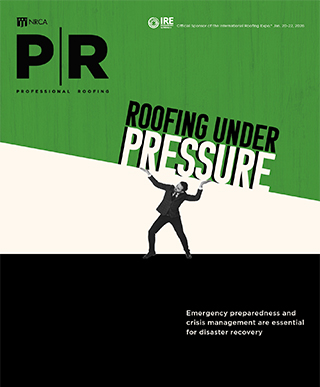
“Life is choice. All day, every day. Who we talk to,
where we sit, what we say, how we say it. And our lives
become defined by our choices. It’s as simple and as
complex as that. And as powerful.”
—Louise Penny, author
When I first set out into the professional world, my path seemed clear. After years of study, I received a lifetime teaching certification. It felt like an accomplishment that would anchor the rest of my life. Of course, I also was carrying the weight of substantial student loan debt—the kind of debt that makes you believe the only logical path forward is a “safe” career, one with a steady paycheck and long-term security. Teaching and coaching, I believed, would be that course. I imagined decades in the classroom, forming connections with students, shaping young minds and retiring with a long list of success stories to tell.
But reality has a way of testing our assumptions. My first year in education was not the warm, fulfilling experience I had anticipated. It wasn’t that the students were difficult or I couldn’t handle the work. Rather I could already feel, deep down, I wasn’t in the right place. There was a restlessness, a gnawing sense I was in the wrong career entirely. Teaching is a noble profession, but for me, I felt I could make a greater impact elsewhere.
That summer, determined not to drift aimlessly, I launched into a kind of personal research project. I explored industries I had never seriously considered before. The oil and gas sector fascinated me with its sheer scale and intricacies of global supply. Semiconductors offered a look into the microscopic yet powerful forces driving modern technology. The cellular industry was in a period of rapid expansion, promising innovation at every turn. I also examined insurance with its mix of risk, protection and complex regulations and building materials, an industry I had always considered unglamorous but reliable and stable.
Roofing wins out
It was building materials—and, more specifically, roofing—that unexpectedly caught my attention. Roofing wasn’t flashy, and it wasn’t on anyone’s list of trendy careers. But that was part of the appeal. Here was an industry where the work was tangible and essential. The more I looked into it, the more I realized the industry depended not just on product quality but also on relationships, trust and reputation. A good roof lasts decades; a bad one fails in a matter of years. That kind of clear accountability was refreshing.
When I was offered a position in a roofing manufacturer’s new hire program, I saw a fresh opportunity. The program came with three uncompromising conditions:
- I could have no prior industry experience.
- I had to be willing to relocate anywhere in the country.
- I had to complete an intense six-month training regimen.
I signed on, ready for a complete career reboot. Training was rigorous. We studied product lines, installation methods and building codes. We learned about the architectural design process, science of materials and complexities of the supply chain. There were sales techniques to master, customer service standards to internalize and a constant emphasis on professionalism. By the time I completed the program, I felt as though I had been given a crash course not just in roofing but also in how an entire ecosystem of manufacturing, distribution and installation functioned together.
My first territory assignment sent me to a new address in a new city. My role was multifaceted: I had to work closely with distributors, persuading them to purchase, stock and promote our materials. I had to visit architects, presenting our products so they would specify them in their designs. And I spent half my time on job sites and in offices with roofing contractors engaging in what’s known as “pull-through” selling—creating demand at the contractor level so distributors would feel compelled to keep our products in stock.
The contractor interactions quickly became the most rewarding and revealing part of my job. I learned early on that my role went beyond selling. I became a consultant, helping contractors think strategically about their workflows, customer relationships and profitability. I began to understand success in roofing wasn’t limited to technical skill; it was about running a business with the mindset of an effective and efficient entrepreneur.
Since that first territory, I relocated multiple times, managing territories in different regions. Each market had its own personality. Hailstorms affected various markets sporadically while new construction created demand unevenly in certain territories. In the Northeast, historical architecture and harsh winters shaped the types of products in demand. In the South, heat, humidity and hurricane season dictated material choices and installation timelines. In the West, high winds and wildfires posed seasonal threats while energy efficiency and modern design trends influenced buying decisions.
But across all these markets, one truth held firm: Manufacturers thrive when they partner with the right suppliers and the best contractors.
Recognizing this, I eventually transitioned to the distribution side of the business. If working for a manufacturer had taught me about creating demand, distribution showed me the day-to-day realities of fulfilling it. Now, contractors weren’t just influencers; they were my direct customers. I was responsible for point-of-sale relationships, making sure products were available, and ensuring service met or exceeded expectations.
The closer I got to contractors’ daily operations, the more I saw how seemingly small decisions could lead to extraordinary results. I learned the rhythms of their workweeks, the pressure points in their busy seasons and the bottlenecks that slowed them down. This proximity made my consulting role even more important. I became a partner in their businesses’ success. The more I understood their workflows, the better I could anticipate their needs and help them profitably grow their businesses while avoiding costly mistakes.

Observations
During the past 27 years, I’ve interacted with thousands of contractors. I’ve seen what makes some of them thrive and others become extinct.
Some were perpetually disorganized, bouncing from job to job without a clear plan. Their projects were often short-ordered or placed too late, forcing everyone down the line to scramble. Communication was inconsistent or nonexistent, and they were always playing catch-up. For these contractors, running a business felt like a constant emergency.
Struggling contractors often share common traits: chronic disorganization, financial instability, resistance to education and weak supplier relationships. They operate without clear systems, jumping from one reactive decision to another. Jobs are bid too low in a misguided attempt to win work only to realize after the fact there’s little or no profit to be made. Some depend entirely on insurance work, leaving themselves vulnerable when that pipeline slows. Others resist change, ignoring new technologies and methods until they are left behind.
Other characteristics of “ugly” contractors include:
- Minimal knowledge about products
- Accepting jobs they are not qualified and/or certified to complete
- No understanding of how to create schedules
- Believing business fundamentals are unimportant
- Not having responsible accounting functions in place
- Living from job to job
- Seeing little value in education or training
- Having no awareness of profit margin
- Assuming heavy activity equals success
- Not cultivating healthy relationships with suppliers and vendors
But I also met contractors on the opposite end of the spectrum. I met contractors who were visionaries, running their companies with precision and passion. They were constantly thinking ahead, innovating and building strong reputations in their communities. Some started with a single truck and a handful of tools, growing their operations into respected local brands. Others were newer but hungry to learn, absorbing every piece of advice and insight they could find.
Successful contractors run their businesses with structure and foresight. They view themselves as entrepreneurs, building partnerships with suppliers, vendors, crews and industry organizations. They invest in training, stay current with new products and regulations and have clear business plans with measurable goals. They manage cash flow carefully, balancing reinvestment with personal reward. They market themselves consistently and present a professional image to every customer.
Good contractors also:
- Take advantage from qualified assistance such as NRCA
- Fully understand they need to partner with others to succeed (suppliers, vendors, crews, trade organizations)
- Adjust their workflow according to prepared plans and processes
- Value training and education as foundational to remain qualified
- Have clear business plans with specific goals, milestones and measurements
- Prioritize others before themselves
- Create a set of core values that are acted
upon and not just written on a website or pamphlet - Understand the value of the services provided
- Accept constructive criticism so they can improve
- Operate within a predetermined business process
- Understand and implement basic accounting practices and cash flow considerations
- Are knowledgeable about product performance
and installation - Have a clear balance of saving and indulgence
- Proactively promote and market their businesses
- Want to learn and understand innovation and technology
- Recognize the need for business and sales processes
- Approach sales from a retail-type approach with clear processes regardless of insurance involvement
Adaptability is key
The roofing industry has changed dramatically since I started. When I first entered the field, many contractors relied on word of mouth alone for new business. Now, digital marketing, online reviews and social media presence can make or break a company. Product innovations, from reflective coatings to impact-resistant shingles, have changed how roof systems are installed and how long they last. Safety regulations have become more stringent, and customers are more informed (and more demanding) than ever.
The next five years promise even more change. Technology will continue to reshape the industry, and labor shortages will continue to challenge contractors to find and retain skilled workers. Supply chain disruptions also will test contractors’ resilience and their relationships with suppliers.
For roofing contractors, adaptation isn’t optional. The ones who will thrive will be those who invest in continuous education, embrace technology and strengthen their professional networks. They’ll understand suppliers are more than transactions: They are strategic partners who can offer support, insight and solutions when challenges arise.
Looking back, my journey from education to roofing has been one of constant learning and reinvention. The work may not always be glamorous, but it’s deeply satisfying. Roofing is about more than shingles and rolled goods; it’s about trust, problem-solving and helping people protect what matters most to them.
If there is one lesson I’ve carried with me, it’s that success in this industry comes from building a strong foundation on technical savviness and solid business acumen. Systems, relationships, financial discipline and commitment to learning are the real load-bearing beams. With them in place, a contractor can weather any storm. Without them, even the best craftsmanship won’t keep a business standing for long.

DAVID SANDERS
Sales director of training & development
QXO



